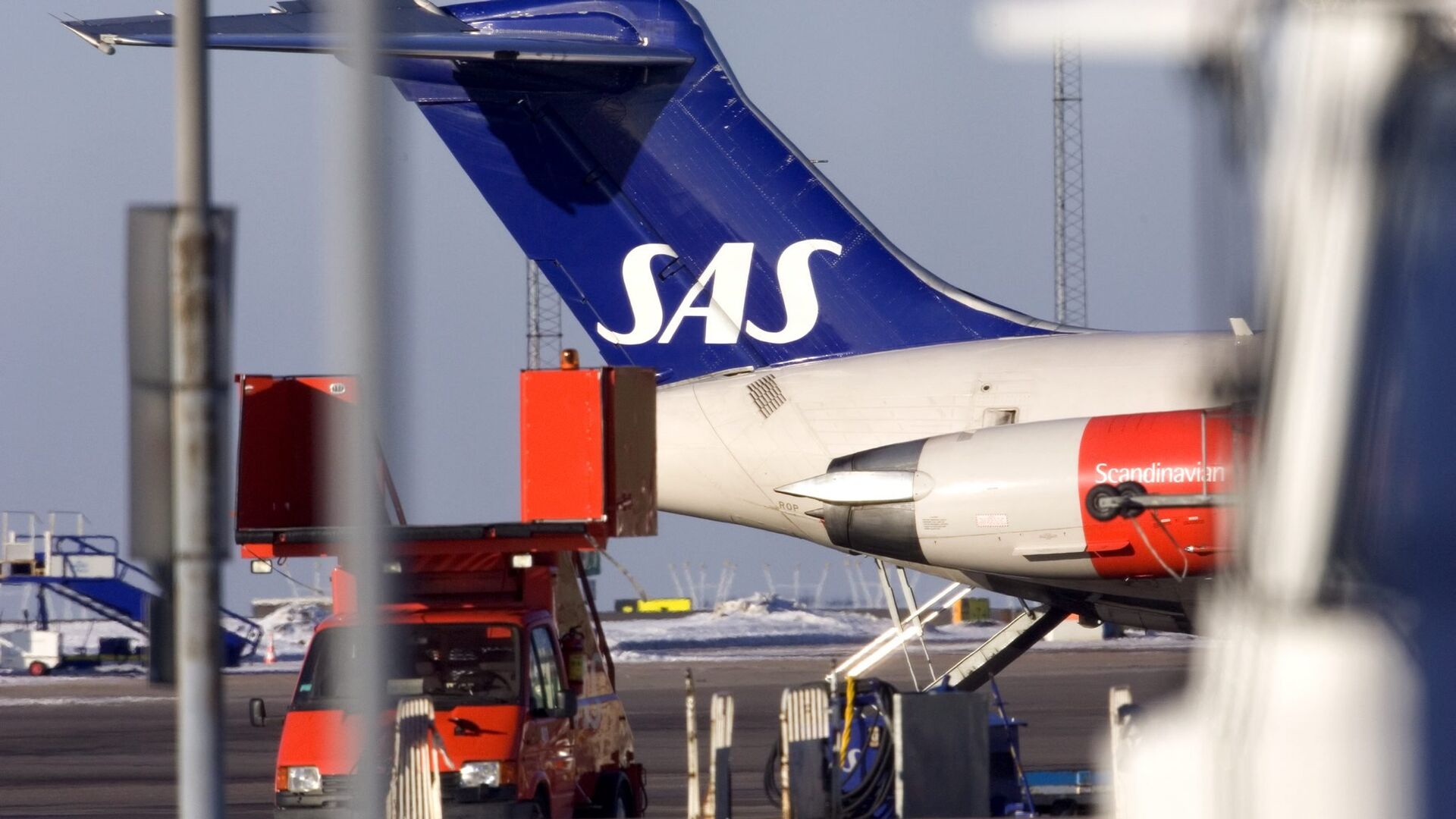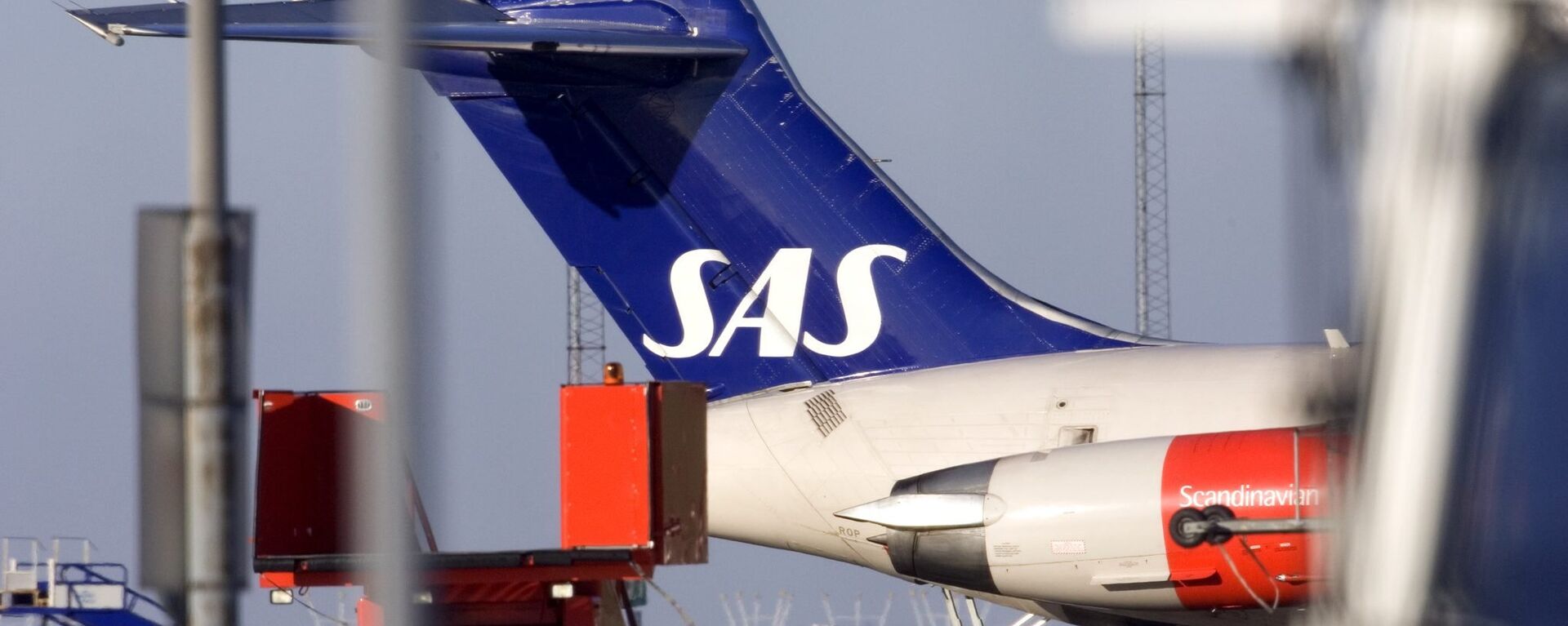Nordic Flagship Carrier SAS Facing Its 'Most Serious Crisis Ever'
06:24 GMT 31.05.2022 (Updated: 18:40 GMT 19.10.2022)

© AP Photo / Bjorn Larsson Rosval, Scanpix
Subscribe
Staff shortages, labour disputes, massive debt and plummeting demand, exacerbated by the COVID-19 pandemic, have caught Scandinavia's largest airline “in a crossfire of problems”, as the Danish economic newspaper Finans put it.
Ravaged by the pandemic and shaken by piling debts, the Scandinavian flag carrier SAS is facing its most serious crisis ever, that risks putting the mighty company on its knees, analysts have concluded.
Shaken by nine consecutive quarters of substantial losses, the company is “caught in a crossfire of problems” and “may be looking into the abyss”, the Danish newspaper Finans wrote. To avoid a catastrophic crash, the company needs to quickly raise billions to shave off the massive debt.
“There is no doubt that SAS is in its most serious financial crisis ever,” aviation analyst Hans Jørgen Elnæs told the Norwegian newspaper Børsen. “The debt is far too high, approximately SEK 33.5 billion ($3.4 billion), and the company's competitiveness has been weakened through a too high cost base which means that SAS can longer compete on ticket prices against Norwegian, Flyr and other low-cost players in the growing holiday and leisure market,” Elnæs said.
Additionally, problems are piling up. Pilots from several trade unions are suing the company, arguing that the establishment of subsidiaries will lead to many pilots losing their jobs, which tarnishes the company's image.
Furthermore, staff shortages and delayed flights have meant that SAS had to cut 4,000 flights this summer alone. It is likely that more than 100,000 SAS passengers will be transferred to other flights than the original ones.
SAS has also received headwinds on social media and in media reports, with customers queuing to accuse them of poor service. The argument against SAS gained traction as Danish comedian Frederik Cilius Jørgensen accused the company of “first class f***ery” and “unbelievably poor customer service” in connection with a flight home from Italy.
SAS has also received headwinds on social media and in media reports, with customers queuing to accuse them of poor service. The argument against SAS gained traction as Danish comedian Frederik Cilius Jørgensen accused the company of “first class f***ery” and “unbelievably poor customer service” in connection with a flight home from Italy.
Earlier, in October 2021, SAS CEO Anko van der Werff agreed that the company was “fighting for survival” amid massive debt, falling demand among business travellers and dissatisfied employees. In February 2022, van der Werff presented a plan, called SAS Forward, designed to ensure a full review of operations, and help reduce annual costs by SEK 7.5 billion ($770 million) annually. According to Finans, though, the rescue plan is lagging behind and failing to get support from unions and leasing companies.
The Norwegian state ceased to be an owner of SAS in 2018, but nevertheless gave the crisis-stricken company NOK 1.5 billion ($160 million) in government-financed loans during the pandemic. They did the same with the Norwegian airline to the tune of NOK 3 billion ($320 million). To avoid losing this sum, the former government invested yet another NOK 1.2 billion ($130 million) in refinancing the company. The current Trade and Industry Minister, Jan Christian Vestre, is now facing the same choice in SAS, described by the news outlet E24 as “double or quits”.
According to Norwegian School of Economics professor Frode Steen, no new funds should be funnelled into SAS. He furthermore argued that the company is “not well-run” and is “struggling with most things”.
“If Norway invests more money now, I am sure that we will never get it back,” Steen argued.
The aviation analyst argued that SAS will have a more sustainable future if the company doesn't have majority state owners.
“But for understandable reasons, for example, Denmark may be interested in continued ownership in SAS, because it accounts for around a third of the traffic at Copenhagen Kastrup Airport, which is also Denmark's largest workplace,” he argued.
The pan-Scandinavian flag carrier SAS is currently co-owned by the Swedish and Danish governments, which control 21.8 percent each. Before the pandemic, SAS operated 180 aircraft to 90 destinations. Its main hubs include Copenhagen Kastrup, Stockholm Arlanda, and Oslo Gardermoen.



